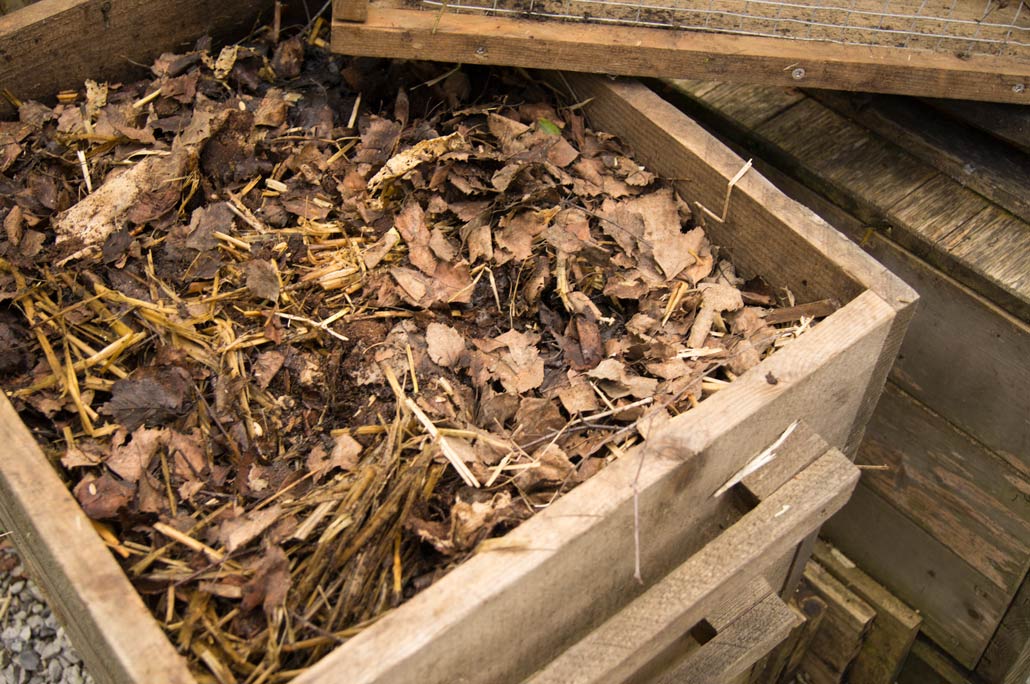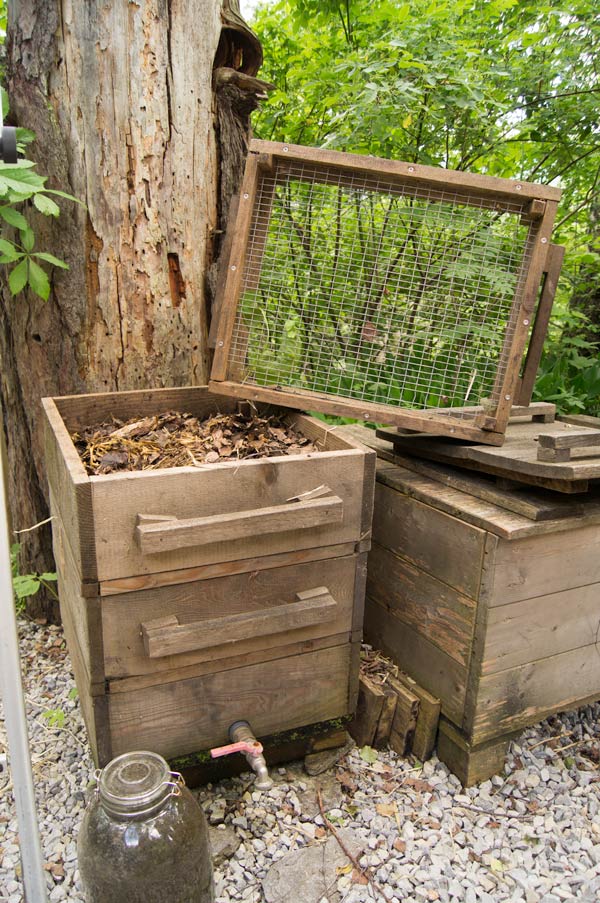An example of plants growing directly on top of a compost bin.
(This is an old article from hyperbrain.me / svarttorpet.se)
During the seminar I took at Krameterhof I learned a few new things about compost. Here are some of my favorite tips that I hope you will also find useful:
1: Mix and match
Try to have as much variety as possible in your compost pile. It will be easier to keep the compost healthy like that. All too often you see people creating a ”compost” (a stinking rotting pile) consisting of only wet food leftovers or only grass clippings. Your helpers (i.e. worms, microorganisms and other soil creatures) will have a hard time digesting that.
You need to make sure that there is some air coming through by adding a bit coarser materials such as thin twigs, some dry straw and leaves etc. If you don’t want to wait too long for your compost to be processed you may want to avoid thick branches/logs, but you can also take these out when the rest of the compost is ready and put into the next batch if you have the patience to do so. Or add them to the bottom of a Hügelbeet.

2: Import soil from your local forest
Instead of buying expensive compost worms to get started you can just go to a nearby forest and pick up a couple of buckets with soil. Preferably take it from underneath some trees where the leaves are already halfway decomposed.
The soil will be full of mycelium, microorganisms and several types of worms that will help your composting process. Like this you will give your compost a real kickstart on the way to producing nice and rich compost soil. The worms you bring in will reproduce as long as you feed them with new materials continuously.

3: Keep your compost moist
A compost bin standing in full sun will dry out and won’t break down as wanted. Try to keep your compost bin in a shaded location and water it when needed. Like that it will work as best and quickly break down. Also protect it from heavy rain with a cover. Too wet compost might lead to an anaerobic process, which usually smells bad (see point 1).
4: Brew some compost tea
The liquid runoff from a compost bin is usually called compost tea (no, you don’t want to drink it!). It makes for a really great liquid fertilizer. You can mix it out with water or use it concentrated as it is. Basically you cannot use too much of it as long as your compost is healthy.
I would still recommend just using it a couple of times per growing season when you see your veggies and other plants need a small extra boost. One way to get easy access to compost tea is building a compost bin in several layers and add a bin with a tap to the bottom. Check out this drawing for an example.
5: Try fermented composting
There are some exciting alternative compost methods that work with anaerobic methods, without being stinky or attracting pests. One of the most known is Bokashi where you add a mix of active microorganisms (mainly lactic acid bacteria) to start a fermentation process. Check out this article on Bokashi composting for a thorough guide on how to set up your own DIY Bokashi system.
It’s great for people who don’t have space for a larger compost bin since you can keep it under your kitchen sink. You can use a similar process if you have a lot of grass clippings and quickly process it to a kind of ensilage which you can use as mulch in the garden.


